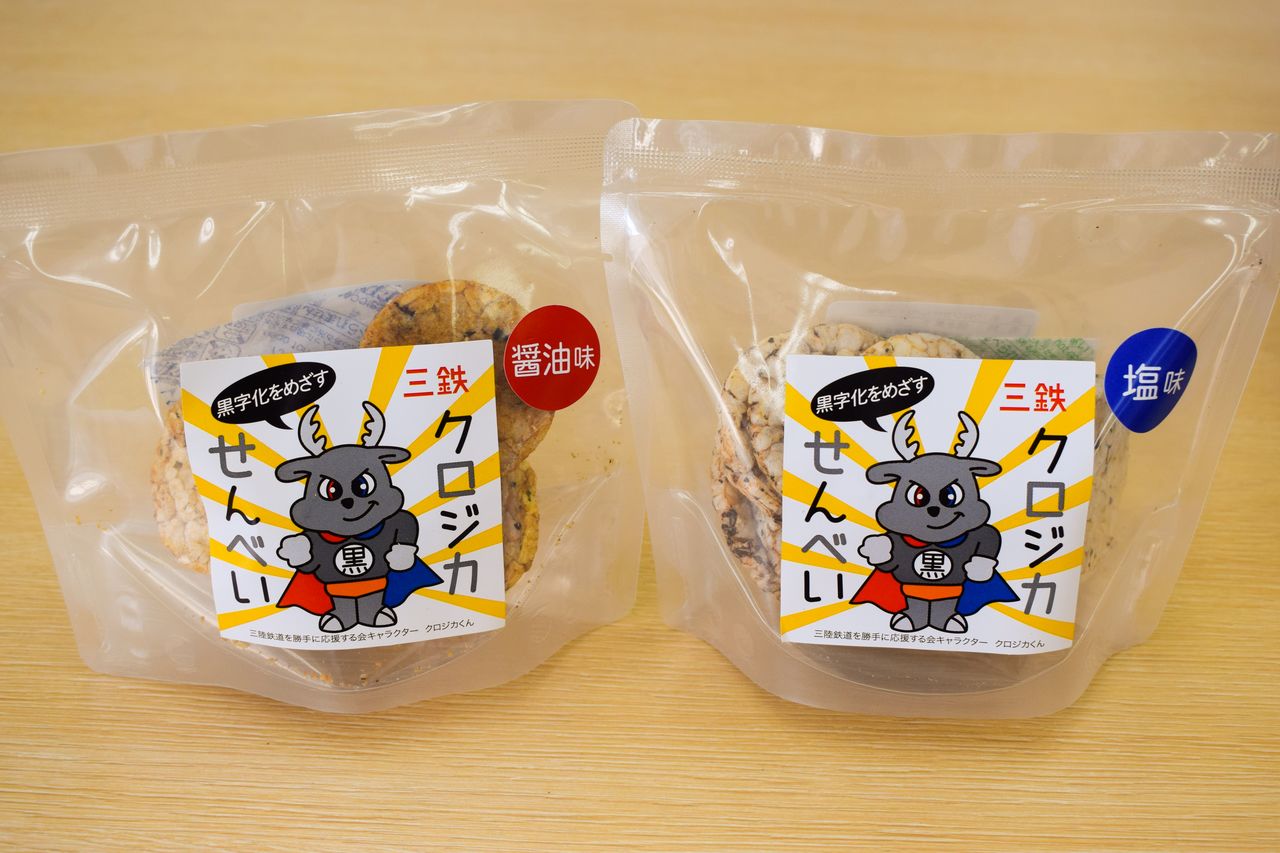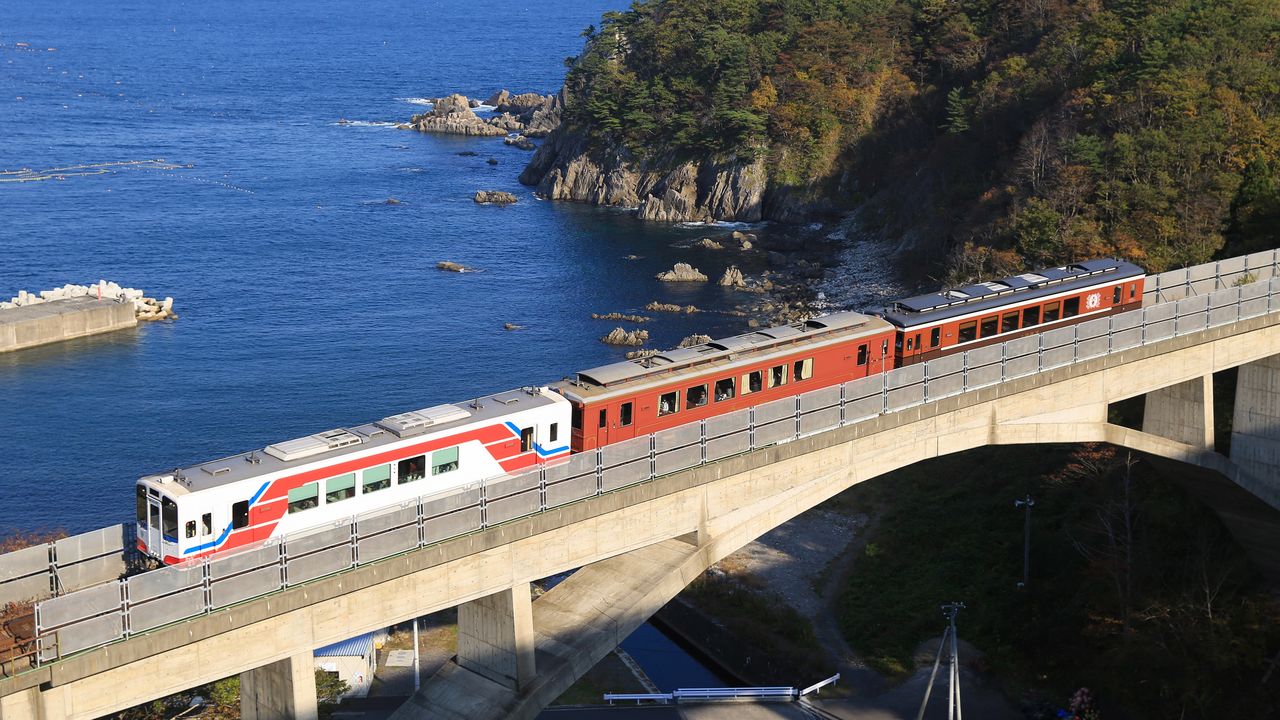
Rambling Along Iwate’s Northern Ria Coast on the Sanriku Railway
Guideto Japan
Travel- English
- 日本語
- 简体字
- 繁體字
- Français
- Español
- العربية
- Русский
The stretch of track between Miyako and Kuji Stations on the Sanriku Railway was once known as the Northern Rias Line. Running through hilly terrain, the route has many tunnels and at one point crosses a 30-meter high bridge overlooking the Pacific Ocean. The many stops along the line are not only scenic, but also offer travelers great opportunities to sample local fare.
Related article › Rambling Along Iwate’s Southern Ria Coast on the Sanriku Railway
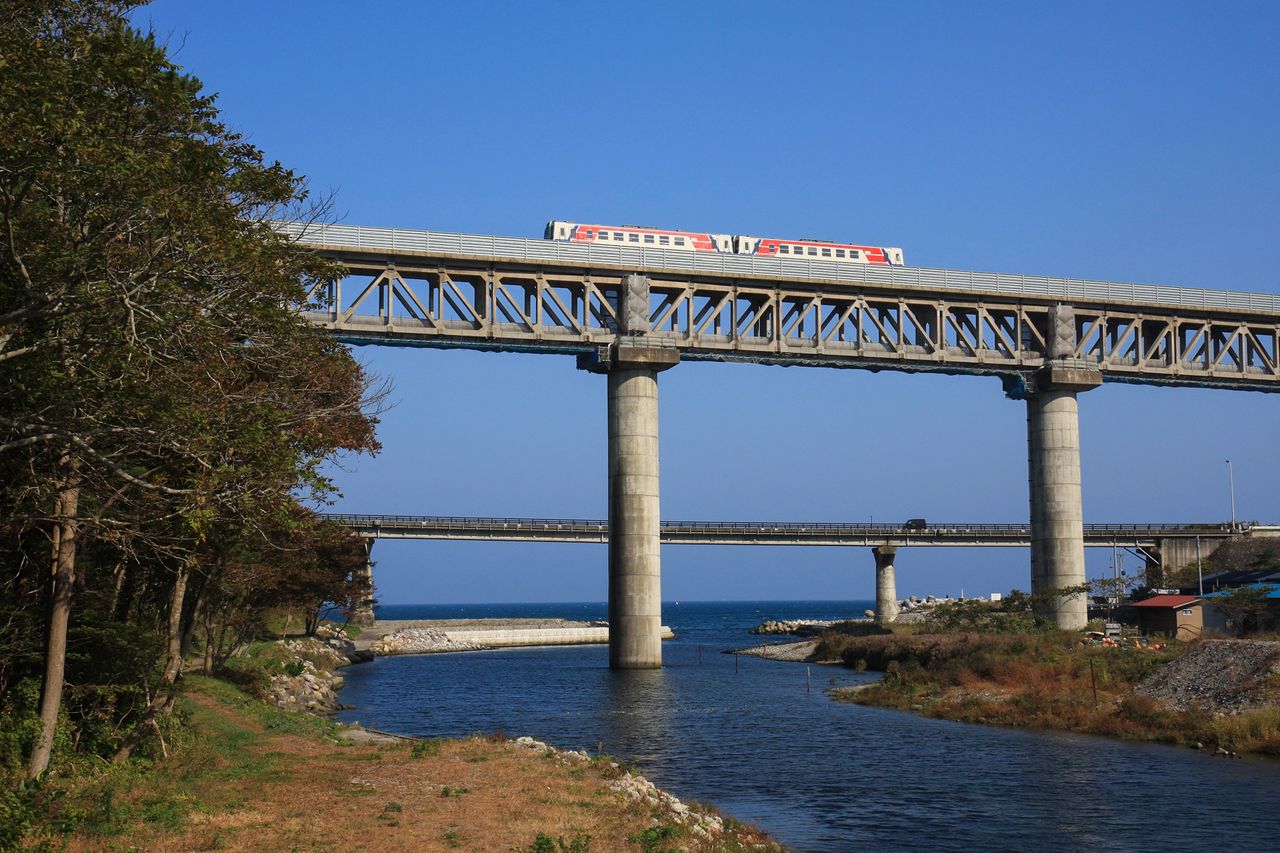
The Akka River Bridge overlooks the Pacific Ocean.
One-of-a-Kind Souvenirs
Souvenir shoppers will want to stop in at Santetsuya at Miyako Station. The store, which opened to coincide with the inauguration of the line, sells exclusive Sanriku Railway memorabilia along with local products. like the popular Kurojika brand of rice crackers. The name, which literally means “black deer,” is a play on words and expresses the hope that the struggling rail line will reverse its financial woes and run “in the black.” The snack is made using locally sourced rice and assorted grains, kelp, soy sauce, and salt.
Passengers should also visit the Miyako Fish Market, a 10-minute walk from the station, to savor the vibrant atmosphere and delectable food products. The market carries a range of seafood along with vegetables and deli goods. There is also a food hall offering meals made with the fresh, local ingredients.
Miyako is the closest station to Jōdogahama, a rocky beach that boasts the most famous view along the entire scenic Sanriku Coast. In the quiet bay, craggy outcrops jut up from the ocean, creating a gorgeous vision evocative of Jōdo, the Buddhist paradise.
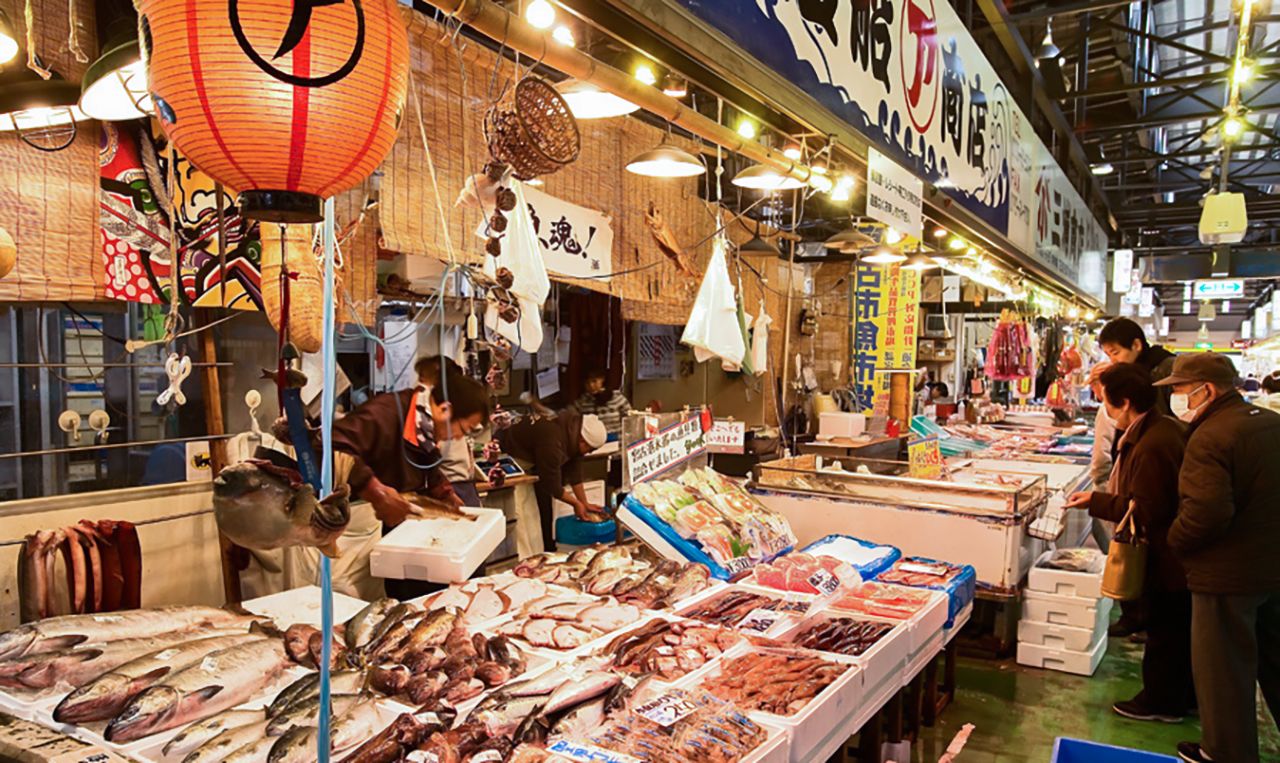
Miyako Fish Market bustles with regulars and tourists on the prowl for local delicacies. (Courtesy Iwate Tourism Association)
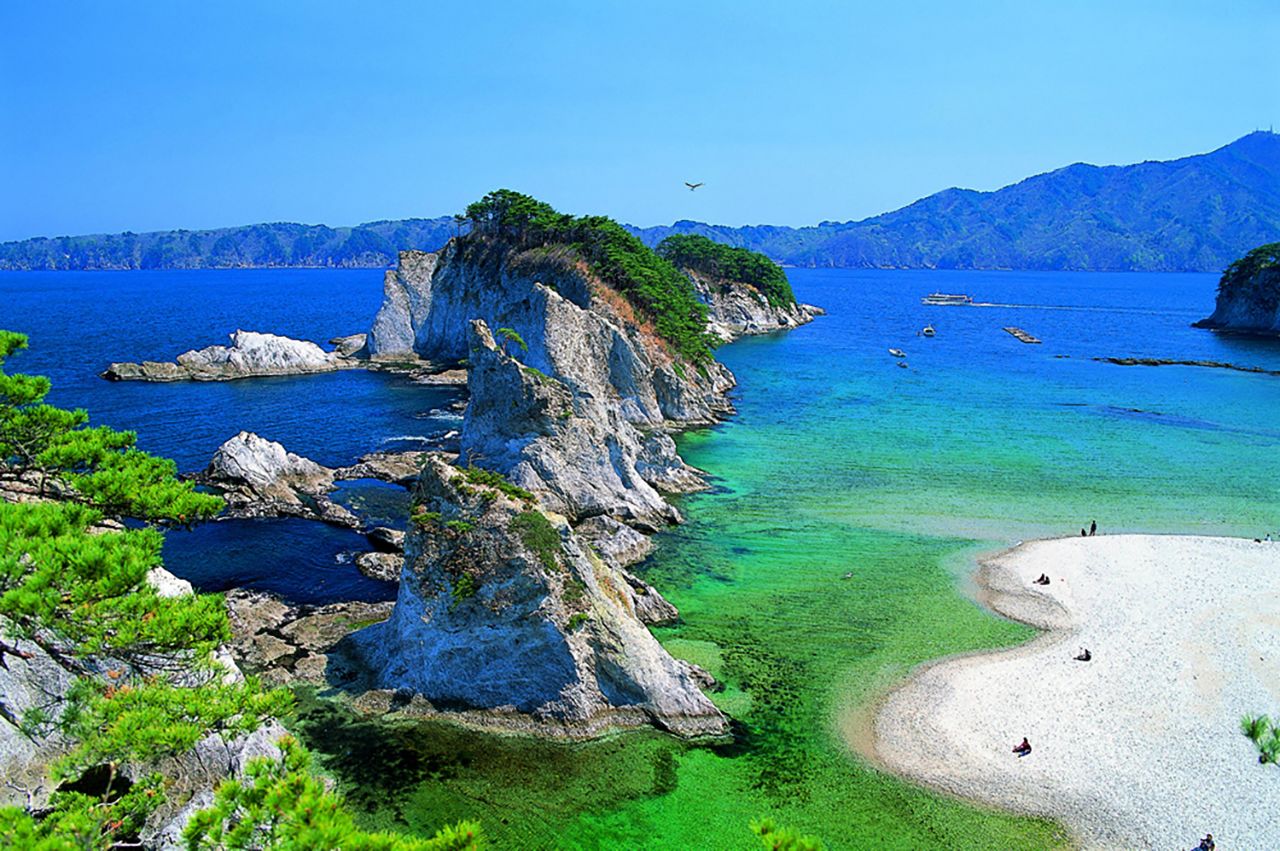
Jōdogahama is a 20-minute bus ride from Miyako Station. (Courtesy Iwate Tourism Association)
Stunning Coastal Views
Further up the line from Miyako is Horinai Station, a small stop on the line close to two scenic bridges. Just to the southeast sets the Ōsawa Bridge, a 156-meter long arch spanning a narrow stream. Further to the northwest toward Shiraikaigan Station is the 302-meter long Akka River Bridge. Both structures look over the Pacific Ocean. As the train crosses the bridges, it slows and then stops momentarily to allow passengers to appreciate the view or snap a photo.
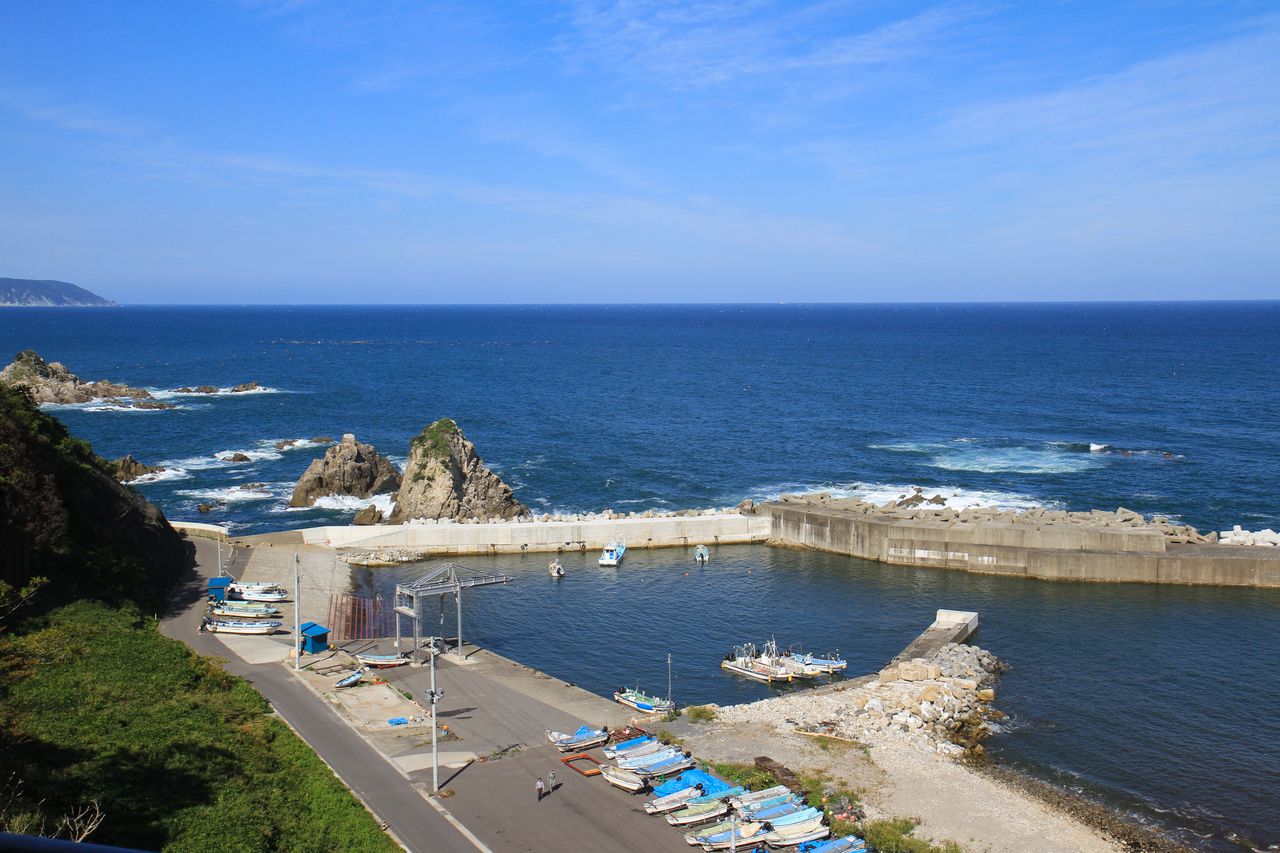
Ōsawa Bridge overlooks a fishing port and the Pacific Ocean beyond.

In autumn, runs of salmon can sometimes be seen in the waters below the Akka River Bridge.
Salty Ice Cream and the End of the Line
Rikuchū-Noda Station boasts a roadside rest stop, the Michi no Eki Noda, catering to both drivers and rail passengers. Visitors can try the unusual soft-serve ice cream flavored with vanilla and natural sea salt. Residents of Noda have been producing salt for over 400 years by slowly cooking sea water over a wood fire.
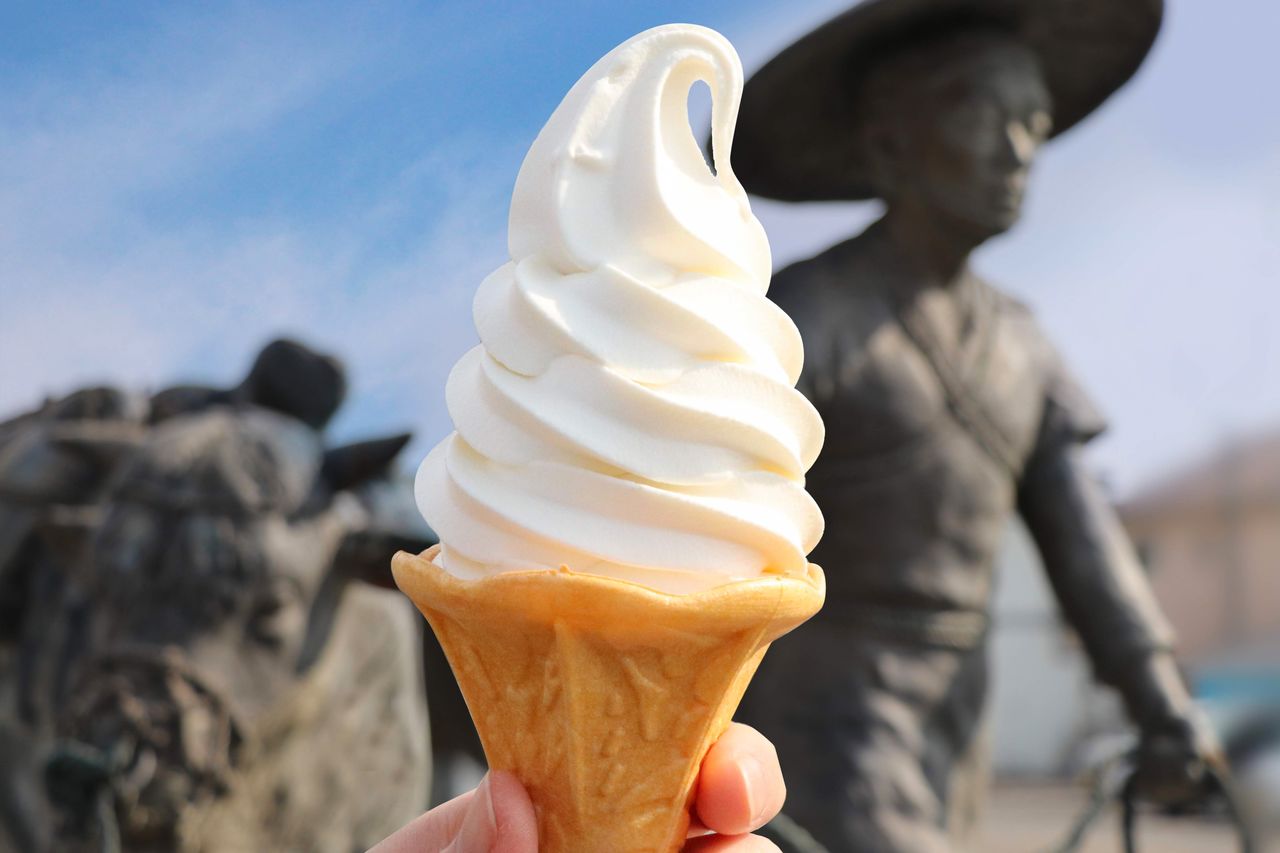
Summertime sees crowds lining up to try soft-serve flavored with local sea salt. (Courtesy Noda Village Tourism Association)
The northern terminus of the Rias Line is Kuji Station. The area is famous for ama, female freedivers who harvest shellfish, and the station has a permanent exhibition dedicated to the traditional fisherwomen. Visitors can try on a diving suit to get a feel for the ama way of life.
The station shop Sanriku Rias-tei sells gourmet bentō boxes containing sea urchin gently cooked in broth and served on rice that are an epicurean delight. Only 20 of these delectable lunches are made each day and sell out quickly.
The highlight of the Kuji coast is Tsurigane-dō, a rock formation sculpted over eons by wind and waves. Around the summer solstice, visitors gather to catch a glimpse of the sunrise through a large hole near the base of the rock.
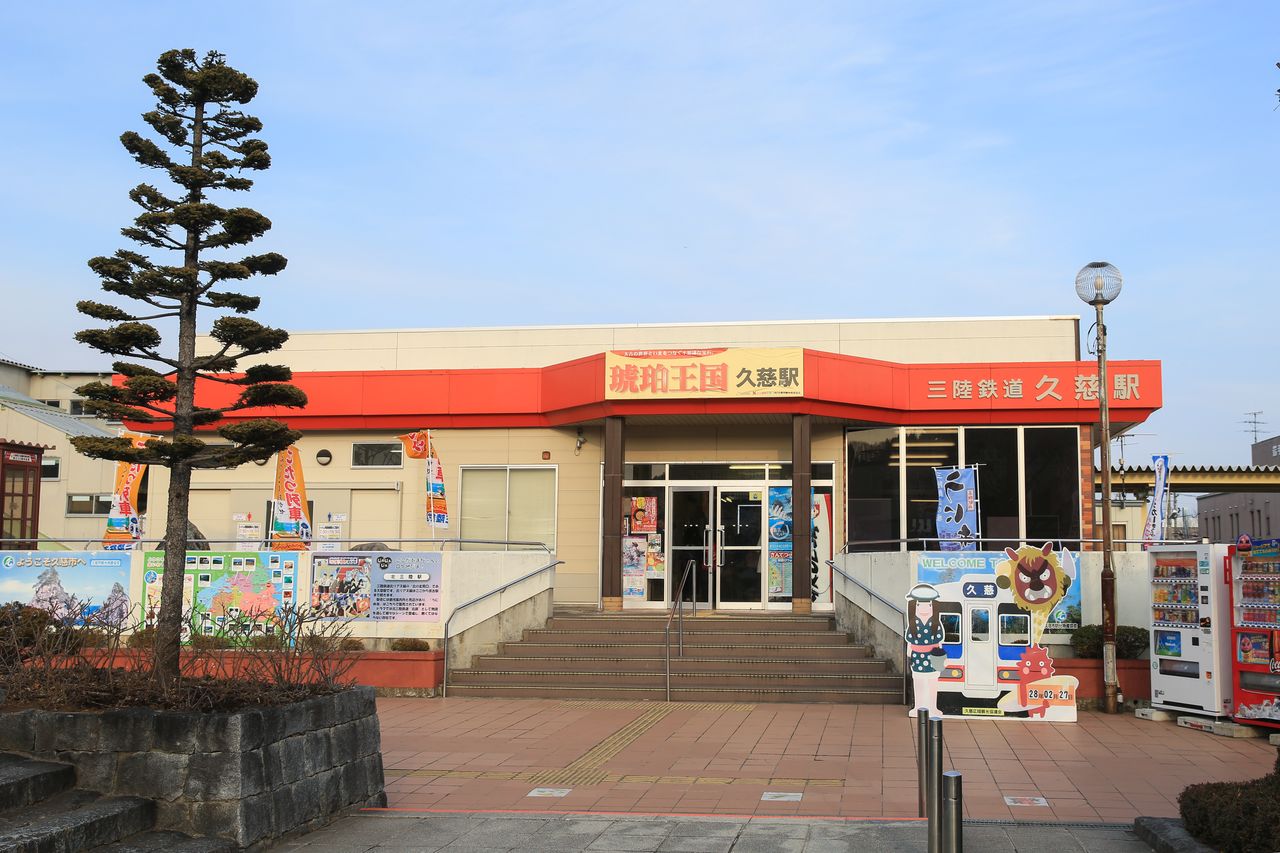
Kuji Station was used as a location in the NHK drama Ama-chan (Little Diver).
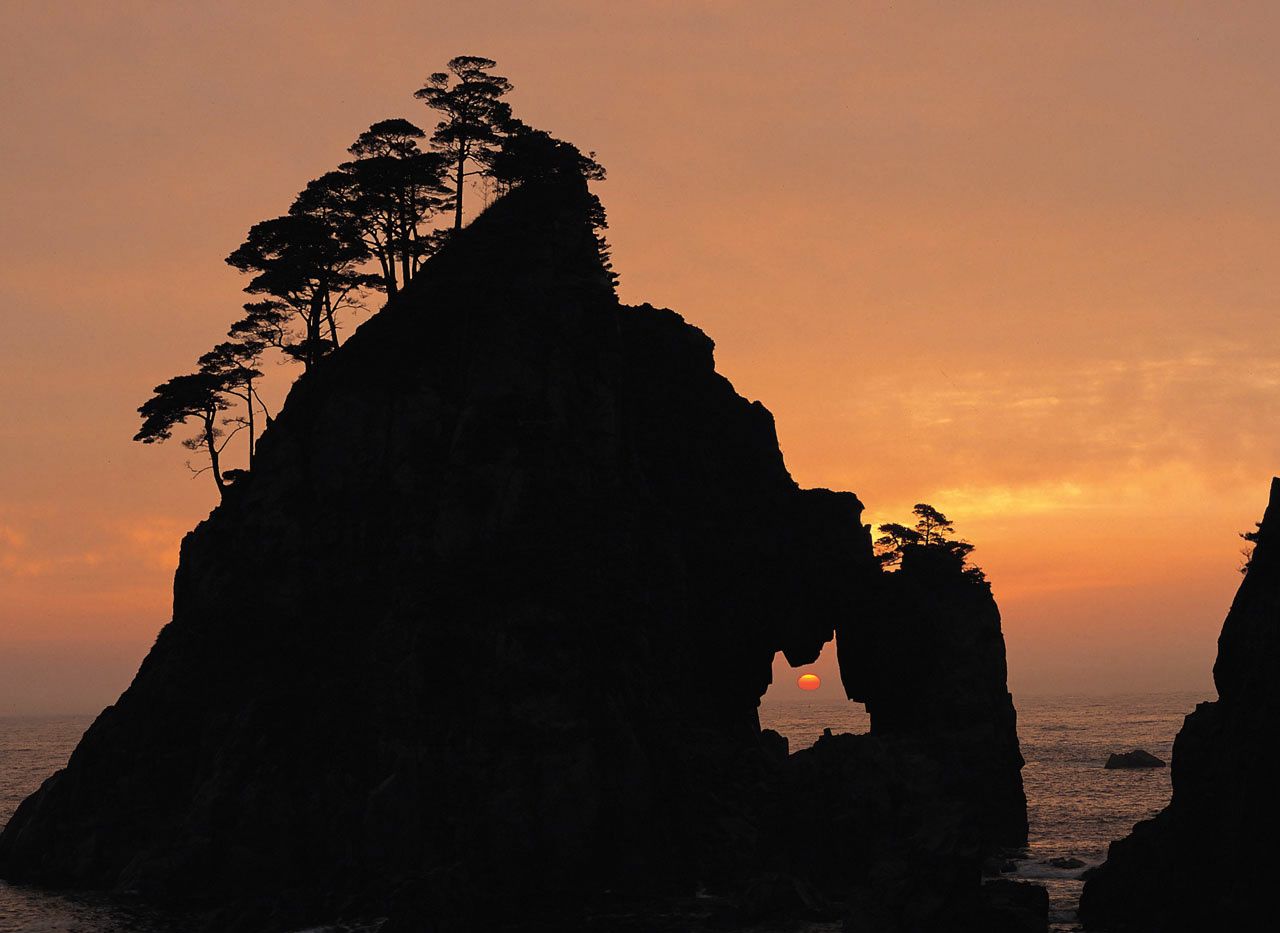
The stunningly beautiful Tsurigane-dō is 15 minutes from Kuji Station by car.
Creature Comfort of Kotatsu
Sanriku Railway offers unique onboard experiences tailored to the seasons. Each year, from December to February, a train decked out with kotatsu runs between Miyako and Kuji Stations. Kotatsu are low tables with a heating element and a quilt to keep in the warmth, providing the comforts of home with views of the Ria Coast.
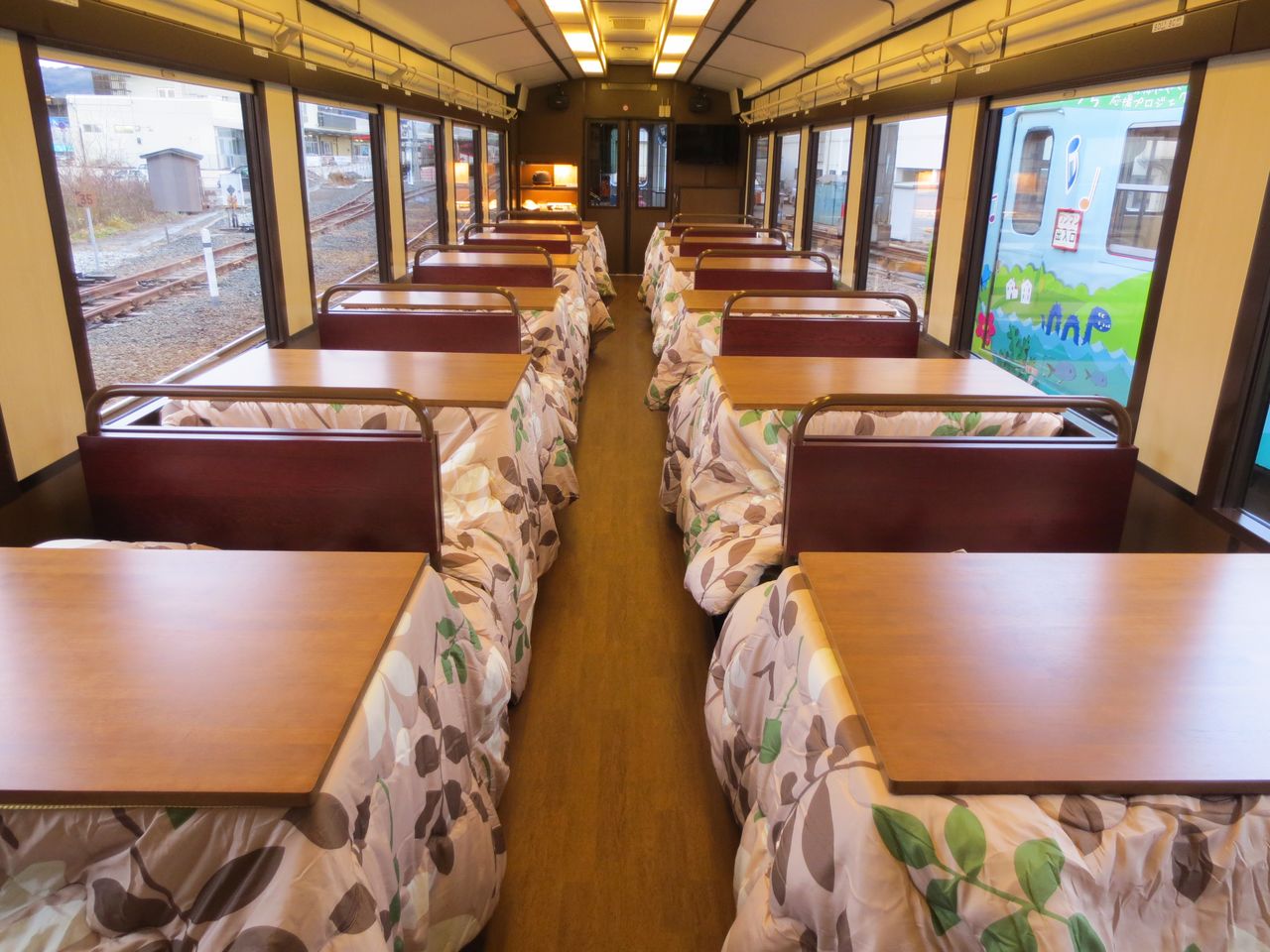
Each kotatsu seats four in homely comfort.
(Originally published in Japanese. Reporting and text by Shoepress. Banner photo: A view of the Sanriku Coast from Ōsawa Bridge. All photos courtesy of Sanriku Railway unless otherwise noted.)
transportation railway tourism Tōhoku Iwate Miyako Iwate Prefecture Kuji
